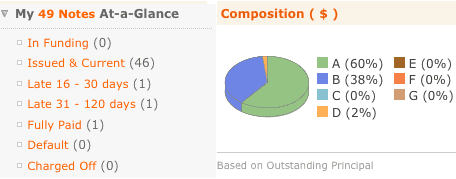I just got a rather difficult question in my inbox, and thought that it would be a good idea to get some perspective and advice from my thoughtful readers to help another reader. Be gentle! I think this could happen to many of us.
Jonathan – what would you do in my shoes:
Parents are in their late 50’s, bought a house they can’t really afford (@7% interest rate) and are going to be foreclosed on within the year.
If I co-sign/add my income to theirs, together we make enough for them to qualify for a refinance @4.5% 5/1 ARM. Possibly long enough for them to sell the house in the next 5 years and recover some of their lost equity (80% of their savings were tied up in the downpayment that has almost all evaporated).
However, I obviously take a credit hit and a significant risk if one of them can no longer make even the reduced payment. I am single, without kids, and in my late 20’s, working an average job (moderate job security).
Thanks for any suggestions – your blog has spared me the same fate as my parents.. so far.
First, I’m glad to hear that you are trying to help your parents, even though they made a significant financial mistake.
Do you live in a non-recourse state, where they can’t go after other assets if you default on a mortgage loan? Have you confirmed that you can get the new loan with the current loan-to-value ratio? Your income might be enough, but they still might reject or require another downpayment. If so, how much does lowering the interest from 7% to 4.5% lower the monthly payment? Would your parents be able to afford the new payment without assistance? How stable is their income?
In the end, I would say that if this requires large cash injections from you and not just your credit score and income verification, it is risky to bet that your home value will rebound in 5 years. It might, or it might not in such a short timeframe. If they live in a non-recourse state, I would at least explore the possibility of having your parents let the house go and get by with bad credit and the rest of their savings. Can they rent a place for a lot cheaper?
However, if they can swing the new payment with your co-signature only, perhaps it is worth a try. The hardest part is probably convincing your parents to downgrade their lifestyle and housing preference to something more realistic. It’s a tough situation. What would you do, readers?



 If you’ve been considering opening an account with Zecco Trading, they just e-mailed me a new promotion that offers 20 free trades for new customers. Use the promotion code “bonus1” in the application:
If you’ve been considering opening an account with Zecco Trading, they just e-mailed me a new promotion that offers 20 free trades for new customers. Use the promotion code “bonus1” in the application:
 Here’s some good news for the many 401(k) participants with Fidelity as their plan provider. Fidelity announced that they plan to launch a series of Fidelity Freedom Index Funds to complement their current Freedom Funds as soon as September. From this WSJ Article*:
Here’s some good news for the many 401(k) participants with Fidelity as their plan provider. Fidelity announced that they plan to launch a series of Fidelity Freedom Index Funds to complement their current Freedom Funds as soon as September. From this WSJ Article*: Amazon.com is offering $5 in free MP3 downloads if you buy a qualifying video game. However, currently the game Big Kahuna Reef both qualifies and is also free itself. Connect the dots. 😉
Amazon.com is offering $5 in free MP3 downloads if you buy a qualifying video game. However, currently the game Big Kahuna Reef both qualifies and is also free itself. Connect the dots. 😉


 MicroPlace
MicroPlace Kiva
Kiva

 The Best Credit Card Bonus Offers – March 2024
The Best Credit Card Bonus Offers – March 2024 Big List of Free Stocks from Brokerage Apps
Big List of Free Stocks from Brokerage Apps Best Interest Rates on Cash - March 2024
Best Interest Rates on Cash - March 2024 Free Credit Scores x 3 + Free Credit Monitoring
Free Credit Scores x 3 + Free Credit Monitoring Best No Fee 0% APR Balance Transfer Offers
Best No Fee 0% APR Balance Transfer Offers Little-Known Cellular Data Plans That Can Save Big Money
Little-Known Cellular Data Plans That Can Save Big Money How To Haggle Your Cable or Direct TV Bill
How To Haggle Your Cable or Direct TV Bill Big List of Free Consumer Data Reports (Credit, Rent, Work)
Big List of Free Consumer Data Reports (Credit, Rent, Work)